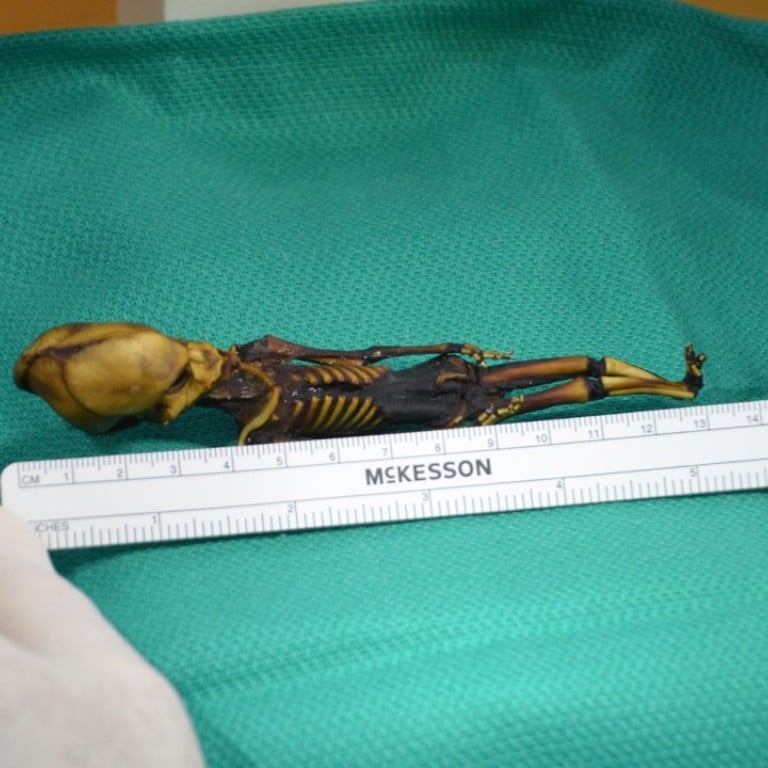
Genetic tests reveal incredible, tragic, true story of tiny Atacama ‘alien’ skeleton
The skeleton has some features of a well-developed child aged about eight – but is just 15cm long, with an elongated cone-shaped head and only 10 pairs of ribs
When the mummified remains of a 15cm humanoid were found in an abandoned mining town in Chile’s Atacama Desert 15 years ago, speculation on its origins ran wild. The skeleton, which was sold to a private collector in Spain, was so bizarre it appeared in a documentary as potential evidence for alien life.

Ata’s remains were found in 2003 in La Noria, an old nitrate-mining town, reportedly wrapped in white cloth tied with a violet ribbon. The skeleton was remarkable in many ways. While only 15cm tall, the bones had some features of a child aged six to eight. Instead of the usual 12 pairs of ribs found on humans, Ata had only 10 pairs. The head was an elongated cone shape.
The curious remains caught the eye of Garry Nolan, a professor of microbiology and immunology at Stanford University in California, who offered to study the specimen. In 2013, he concluded that Ata was human, but the reasons for the dramatic deformities were far from clear.
It turns out to be human, with a fascinating genetic story from which we might learn something important to help others. May she rest in peace
Nolan and his colleagues at the University of California in San Francisco have now published their analysis of Ata’s full genetic make-up. From DNA extracted from the bones, they found that Ata was a girl who carried mutations in at least seven genes that are known to cause major skeletal malformations or accelerate their development. Taken together they explain Ata’s size, abnormal ribs and skull shape, and the apparently advanced age of her bones.
Beyond her skeletal malformations, Ata may have had a condition called congenital diaphragmatic hernia, a relatively common life-threatening birth defect in which the diaphragm does not develop properly. Further analysis found that Ata’s DNA most closely resembled that of other Chileans.
The discovery of mutations that may have aged Ata’s bones could in future help patients with skeletal problems, Nolan said.
“Understanding the process might allow us to develop therapies or drugs that drive bone development for people in, say, catastrophic car crashes,” he said. Details of the work are published in Genome Research.
Nolan believes that Ata was stillborn or died immediately after her birth, perhaps 40 years before her remains were discovered.
“She was so badly malformed as to be unable to feed. In her condition, she would have ended up in the neonatal ICU, but given where the specimen was found, such things were simply not available,” he said.
“While this started as a story about aliens, and went international, it’s really a story of a human tragedy. A woman had a malformed baby, it was preserved in a manner and then ‘hocked’ or sold as a strange artefact. It turns out to be human, with a fascinating genetic story from which we might learn something important to help others. May she rest in peace.”

